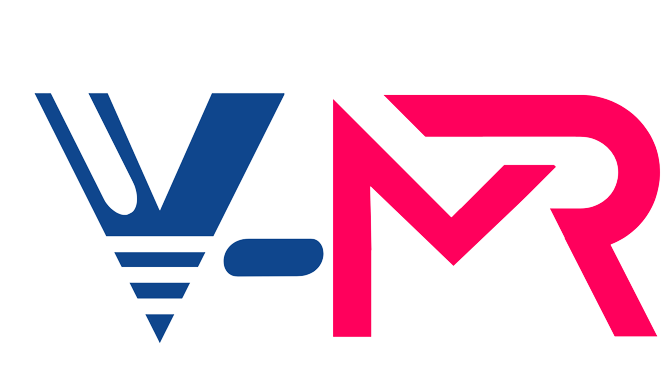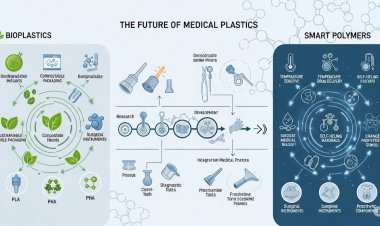Current Trends Influencing the 3D Cell Culture Market
The Global 3D Cell Culture Market is experiencing significant growth, driven by advancements in technology and increasing medical needs. Valued at USD 1,040.75 million in 2022, it is projected to reach USD 3,183.68 million by 2030, with a robust Compound Annual Growth Rate (CAGR) of 15.00%.

The Global 3D Cell Culture Market: Trends, Drivers, and Challenges
The Global 3D Cell Culture Market is experiencing significant growth, driven by advancements in technology and increasing medical needs. Valued at USD 1,040.75 million in 2022, it is projected to reach USD 3,183.68 million by 2030, with a robust Compound Annual Growth Rate (CAGR) of 15.00%. The Vantage Market Research delves into the current market landscape, forecasts for future growth, key drivers influencing this expansion, technological advancements, and the challenges faced by the industry.
Market Overview and Forecasts
According to analysts at Vantage Market Research, The 3D Cell Culture Market has been gaining traction due to its ability to provide a more accurate representation of human tissues compared to traditional 2D cultures. As of 2022, the market was valued at approximately USD 1,040.75 million, reflecting a growing recognition of the importance of 3D cell cultures in biomedical research, drug discovery, and toxicology testing. Analysts predict that this market will continue to expand, reaching an estimated USD 3,183.68 million by 2030.
The growth rate is expected to be fueled by several factors, including the rising prevalence of chronic diseases, the need for more effective drug testing methods, and an increasing focus on personalized medicine. The CAGR of 15.00% indicates a robust demand for innovative solutions in cell culture technologies.
Regionally, North America currently dominates the market, attributed to the presence of key players, advanced healthcare infrastructure, and significant investments in research and development. However, the Asia-Pacific region is anticipated to witness the fastest growth due to rising healthcare expenditures, increasing awareness of advanced cell culture techniques, and expanding biopharmaceutical industries. Europe also holds a substantial share of the market, driven by stringent regulations on animal testing and a strong emphasis on research and development.
Key Drivers Influencing Growth
Several key drivers are propelling the growth of the 3D cell culture market. One of the most significant factors is the rising incidence of chronic diseases, such as cancer, diabetes, and cardiovascular disorders. As these diseases become more prevalent, there is an urgent need for effective treatment options, which in turn drives demand for innovative research methodologies, including 3D cell cultures.
Another critical driver is the shift towards alternatives to animal testing. With increasing ethical concerns surrounding animal welfare, regulatory bodies are encouraging the adoption of in vitro testing methods. 3D cell cultures provide a viable alternative, offering more relevant biological responses that can lead to better predictive outcomes in drug testing.
Additionally, government funding and research support play a crucial role in the market's growth. Many governments are investing in biotechnology and pharmaceutical research, recognizing the potential of 3D cell cultures to revolutionize drug development and personalized medicine. This financial backing not only accelerates research but also fosters collaborations between academic institutions and industry players, further driving innovation in the field.
Technological Advancements in 3D Cultures
Technological advancements are at the forefront of the 3D cell culture market's evolution. The emergence of microfluidics and scaffold-free models has transformed how researchers approach cell culture. Microfluidics allows for precise control over the cellular environment, enabling the study of cellular interactions in real-time. Scaffold-free models, on the other hand, provide a more natural growth environment for cells, enhancing their functionality and viability.
Moreover, the applications of 3D cell cultures in drug discovery and testing are expanding rapidly. These cultures enable researchers to assess drug efficacy and toxicity more accurately, leading to improved drug development processes. The ability to mimic human tissue responses in vitro significantly reduces the reliance on animal models, aligning with ethical standards and regulatory requirements.
Artificial Intelligence (AI) is also playing a pivotal role in enhancing cell culture processes. AI algorithms can analyze vast amounts of data generated during experiments, identifying patterns and optimizing conditions for cell growth. This integration of AI not only streamlines research but also accelerates the pace of discovery in the biopharmaceutical sector.
Challenges and Market Restraints
Despite the promising growth prospects, the 3D cell culture market faces several challenges and restraints. One of the primary concerns is the high costs associated with technology implementation. Advanced 3D cell culture systems often require significant investment in equipment and training, which can be a barrier for smaller laboratories and research institutions.
Standardization and consistency in 3D cell culture techniques also pose challenges. The lack of universally accepted protocols can lead to variability in results, making it difficult to compare findings across different studies. This inconsistency can hinder the acceptance of 3D cell cultures in regulatory submissions and clinical applications.
Ethical concerns and regulatory hurdles further complicate the landscape. While 3D cell cultures are seen as a more ethical alternative to animal testing, they still face scrutiny from regulatory bodies. Ensuring compliance with evolving regulations can be a daunting task for companies operating in this space, potentially slowing down the pace of innovation.
In conclusion, the Global 3D Cell Culture Market is poised for significant growth, driven by technological advancements and increasing medical needs. However, addressing the challenges of cost, standardization, and regulatory compliance will be crucial for stakeholders aiming to capitalize on this burgeoning market.
FAQs
- What factors are driving the growth of the Global 3D Cell Culture Market?
- How does the CAGR of 15.00% influence the future of the 3D Cell Culture Market?
- What are the main applications of 3D cell culture technologies?
- How was the Global 3D Cell Culture Market valued at USD 1040.75 Million in 2022?


















